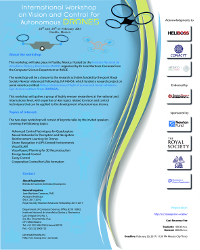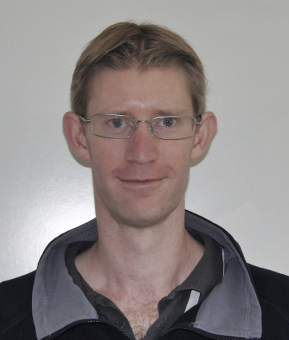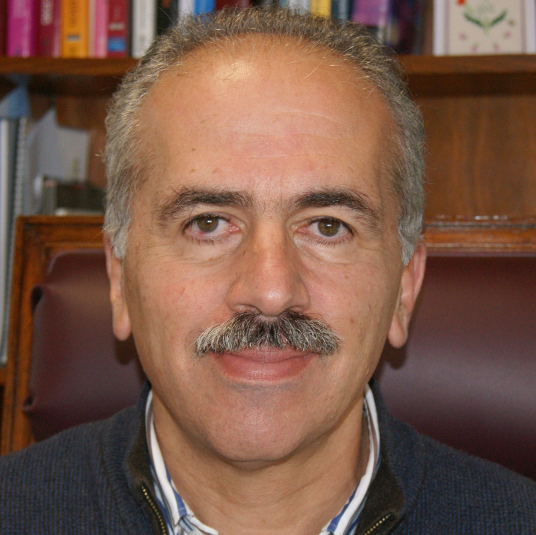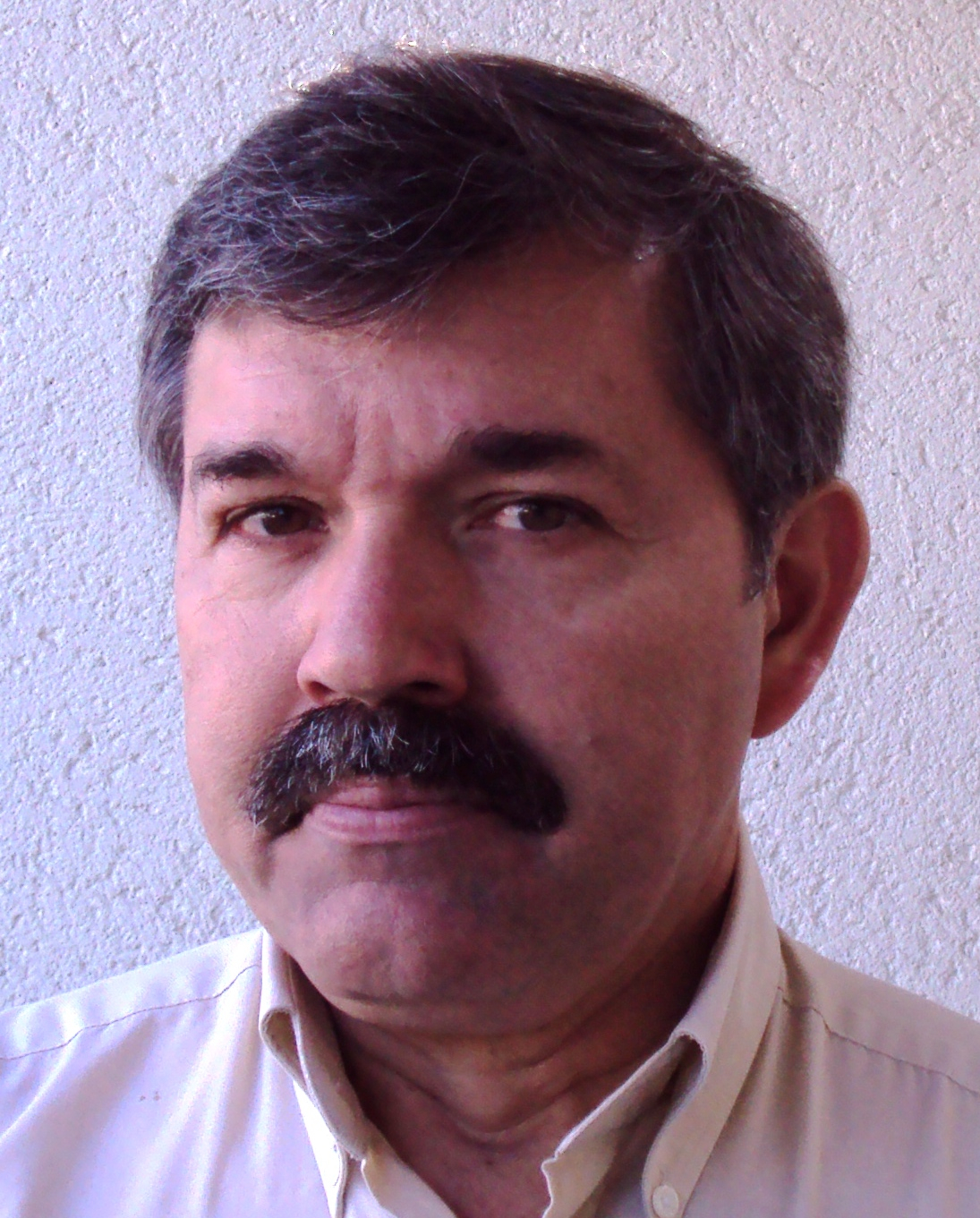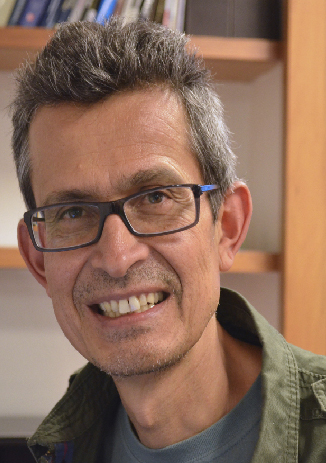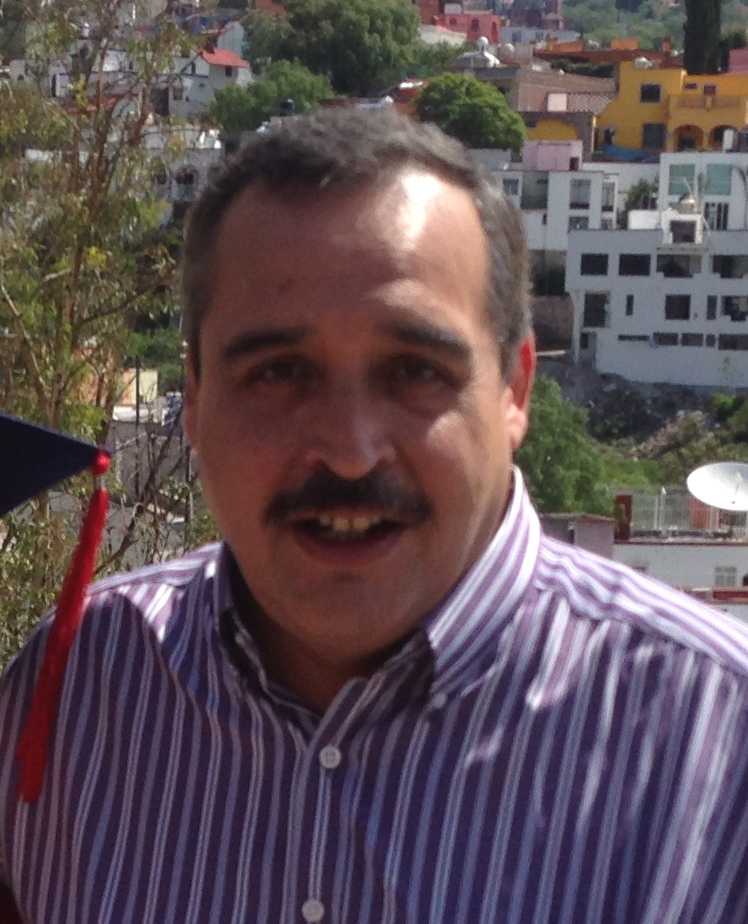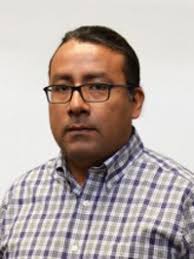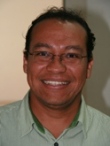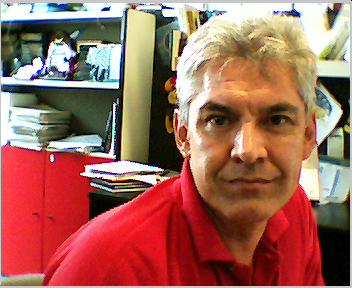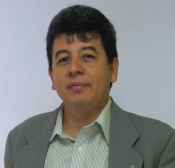Confirmed Speakers
Andrew Calway, University of Bristol, UK
Robust and Efficient Visual SLAM
Visual SLAM has made huge progress over the past 10 years, revolutionising the ability of robotic platforms to map previously unseen environments and to localise themselves within those maps. Moreover, it enables high level understanding capability to be harnessed from computer vision, enabling a tight coupling of navigation and scene understanding. During this time, my lab in Bristol have made a number of contributions to the development of visual SLAM algorithms and methodologies, especially in the areas of relocalisation and efficient mapping techniques. In this talk I will provide an overview of visual SLAM and the challenges involved, followed by details of some of the key contributions that my lab have made. This includes: early work on using optimised filtering techniques (extended Kalman and particle filtering) for both point based SLAM and robust model-based 3-D tracking; scale adaptive feature matching for fast and robust relocalisation; use of higher-level structure (planes) for efficient mapping; and more recent work SLAM using RGB-D sensors, in particular the use of 3-D feature configurations and sparse representations for rapid and robust relocalisation and multiple correspondence types for improved pose estimation. I will also present some early results in the related area of place recognition in urban environments, which is a key capability for effective and scalable visual SLAM systems. The talk will aim to give both an introduction to the area for those who are new to visual SLAM, as well as giving an overview of the above research and the future challenges that face the area.
Richard Bostock, BlueBear Systems Research, UK
BlueBear Systems - Delivery and development of GPS denied solutions into operational UAS
Key to the delivery of UXV technology and systems across industry is the ability to operate with or without GPS technologies. Every delivered system requires mechanisms for both short and long term GPS denied operations, either as a result of intra-city GPS shadowing, operating indoors or intentional GPS jammers. This talk focuses on the need for GPS denied technologies, and approaches to operate in GPS denied scenarios based on BBSR Ltd experience from multi-UAS fixed wing and rotary wing UAS operations over the last 10 years. Approaches include depth based localisation (SLAM, VTL, LIDAR), GPS improvements (UTCGPS, steerable antennas), Path planning (GPS Shadowing, database), and Advanced sensor fusion (PUCE). Technologies have been demonstrated on BBSR products in RAPID, RISER and Blackstart.
Luis Enrique Sucar Succar, INAOE
Visual-based Planning under Uncertainty for 3D Reconstruction
The three-dimensional reconstruction of objets or the environment is a relevant problem for autonomous robots, including drones and mobile robots. This usually requires several views as a single view is not enough for a complete 3D model, so the robot must plan the sequence of positions of its sensor to build the model. This problem is solved iteratively, by planning the next view, which is known as the “next best view” problem. If we consider an autonomous drone or mobile robot there is uncertainty in the positioning of the sensor, which should be taken into account by the planning algorithm to obtain a robust plan. In this talk I will present a method for planning the next best view/state which takes into account the uncertainty in the positioning of the robot. It is a search based approach that generates a set of views which are evaluated according to a utility function which considers observing new surface with overlap with previous views to guarantee registration, and at the same time a path that is collision free and minimizes the distance traveled by the robot. For planning the paths we adapt the RRT algorithm, generating several paths considering the positioning error, and selecting that one that gives the maximum expected utility. The method has been evaluated in simulation and with a real manipulator mobile robot with promising results.
Rogelio Lozano, CNRS Research Director, CINVESTAV
Trajectory tracking for quadrotors and small airplanes
In the first part of the talk a quadrotor is shown to be able to localize with respect to a scene using vision. The quadrotor will perform some trajectories with respect to the scene and also stabilize with respect to the face of a person. The second part of the talk is devoted to the technique of trajectory tracking using a small airplane. Videos will be presented to illustrate the theoretical developments.
Humberto Sossa Azuela, CIC-IPN
New Neural Network Models and their Training Algorithms and Applications
New Morphological Neural Networks with Dendritic Processing (MNNDP) are described in this talk. I talk about the original model and its training algorithm introduced by Ritter and colleagues in 2003, then I talk about the divide-and-conquer method described by Guevara and colleagues in 2014 and some of its applications. After that, I give a few words about our most recent modifications to the original MNNDP model and two new training methods, one based on Differential Evolution and one based on a data clustering method. I present some comparisons with several classification approaches to show some of the advantages and disadvantages of our proposals.
Eduardo Morales Manzanares, INAOE
Learning to Fly with Transfer and Reinforcement Learning
Learning to perform a task can be very expensive (many training samples may be needed) and it is therefore of general interest to be able to reuse knowledge across tasks for a more efficient process. This is particularly true for aerial robotics applications due to possible damage risks. In this talk I will present two approaches of transfer learning to improve the reinforcement learning rate in aerial robotics. The proposed approaches use Gaussian processes to learn a continuous multidimensional transition function, allowing the methods to directly apply in continuous (states and actions) domains. In the first approach we transfer hyper-parameter values of the source task to the target task. In the second approach we automatically generate examples for the target task based on instances previously acquired in the source task. We will experimentally show the effectiveness of the proposed approaches in reinforcement learning benchmark problems, as well as a challenging quadcopter to helicopter transfer task.
Rafael Murrieta Cid, CIMAT
Pursuit-Evasion Problems with Robots
In this talk, two pursuit-evasion problems will be presented. First, we will address the differential pursuit/evasion game of capturing an omnidirectional evader using a Differential Drive Robot (DDR) in an obstacle-free environment. The goal of the evader is to keep the pursuer farther than the capture distance for as long as possible and for the pursuer the goal is to capture the evader as soon as possible. In this talk, we will present the time-optimal strategies for each player, these strategies are in Nash equilibrium; we also analyze the decision problem of the game and present the conditions defining the winner. In the second part of the talk, another pursuit-evasion game will be described, in this second game, the problem is determining whether the pursuer, is able to maintain strong mutual visibility (a visibility notion between regions over a convex partition of the environment) of the evader in a polygonal environment. We assume an antagonistic evader who moves continuously and unpredictably, but with a constraint over its set of admissible motion policies, as the evader moves in the shortest-path roadmap, also called the Reduced Visibility Graph (RVG). We will show decidability of this problem, and provide a complexity measure.
Hugo Rodriguez Cortés, CINVESTAV
Total Energy Control for Unmanned Aerial Vehicles
The concept of total energy control was introduced in the 1980s for the longitudinal control of a fixed wing aircraft. This control design strategy proposes to regulate the total energy rate and the energy distribution rate at the appropriate references to achieve the control objective. The total energy rate and the energy distribution rate are proportional to the time derivatives of the Hamiltonian and Lagrangian functions, respectively. This discussion proposes a generalization of this control design strategy for fully actuated mechanical systems. This generalization is used to design an adaptive nonlinear control strategy for the longitudinal dynamics of a fixed-wing aircraft and a control strategy to track trajectories for a multi-rotor vehicle. Experimental results are presented to illustrate the benefits of this control technique based on the concept of energy.
J. Fermi Guerrero Castellanos, FCE-BUAP
Event-based collaborative control for consensus of VTOL-UAVs
Motivated by applications in physics, biology and engineering the study of consensus of collections of agents (or dynamic systems) has become an important topic in control theory. Roughly speaking, consensus means to reach an agreement regarding a certain quantity of interest that depends on the state of all agents. A consensus algorithm (or protocol) is an interaction rule that specifies the information exchange between an agent and all of its neighbors on the network. Recently, published works addressed resource aware implementations of the control law using event-based sampling, where the control law is event-driven. Such a paradigm calls for resources whenever they are indeed necessary, that is for instance when the dynamics of the controlled system varies, i.e when some events occur. In the context of cooperative distributed control (centralized or decentralized), the event-based paradigm appears as a mean to reduce the communication bandwidth in the network since, contrary to the classical scheme, an event-based control invokes a communication between the different agents only when a certain condition is satisfied. In this talk one presents the development of an event-based collaborative control applied to the problem of consensus and formation of a group of VTOL-UAVs (Vertical Take-off and Landing, Unmanned Aerial Vehicles). Each VTOL-UAV decides, based on the difference of its current state and its latest broadcast state, when it has to send a new value to its neighbors. The asymptotic convergence to average consensus or desired formation is depicted via numerical simulations and real-time experimentations.
Jose Luis Gordillo, Tecnologico de Monterrey (Campus Monterrey)
Vision oriented UAV development
Unmanned Aerial Vehicles (UAVs) is a flying vehicle capable to automatically maintaining control of its flight with no aircrew. The development and miniaturization of electronic components, in latest years, triggered the design and fabrication of UAVs, allowing at same time the miniaturization of those devices. This type of vehicles targeted the entertainment area initially, such as video grabbers or devices that could be piloted via remote control. Many different architectures were designed, among them the rotary wing such as helicopters, quadcopters, hexacopters, etc. They became popular for their capacity to take-off and land vertically and because they were able to hover, i. e., maintain its position in the air over a set point. Nowadays, UAVs are involved in many applications besides the military aspect, for example power line monitoring and inspection, terrain mapping and capture of aerial images, the latter still very popular in social events such as sports and concerts. However, this type of tasks usually requires of human intervention and depends on the skills of the pilot. This talk describes the development of UAVs architectures for providing autonomy to UAVs, based on the use of visual information. One important activity is for pose estimation using a camera out-board or with a camera in-board, using elements of environmental structures. Some other activities, like collaboration with ground vehicles and automatic landing will be described.
Bernardino Castillo-Toledo, CINVESTAV-Guadalajara
The Game of Drones
In this talk, we will present some algorithms recently applied to control of unmanned flying vehicles (drones), specially to tracking references and vision based control. We will present some applications to real problems and present and potential applications, and the trends on drones market in the forthcoming years.
.
About INAOE's Accommodation and Food
Click here!IMPORTANT DATES
Registration Deadline
February 20, 2017 (11:59 PM Mexico City Time)
REGISTRATION IS CLOSED
No more places available!Endorsed by

Sponsored by

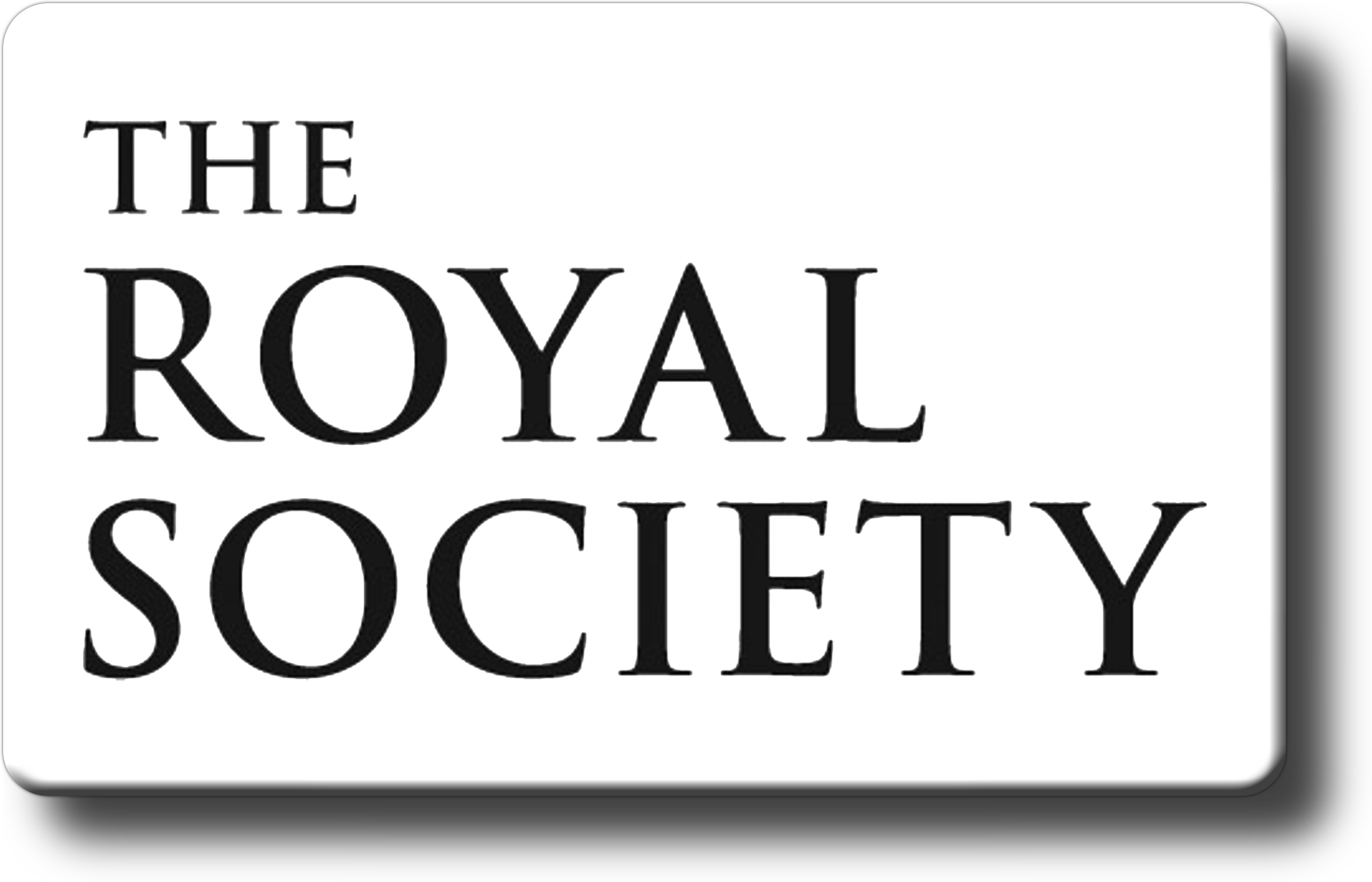
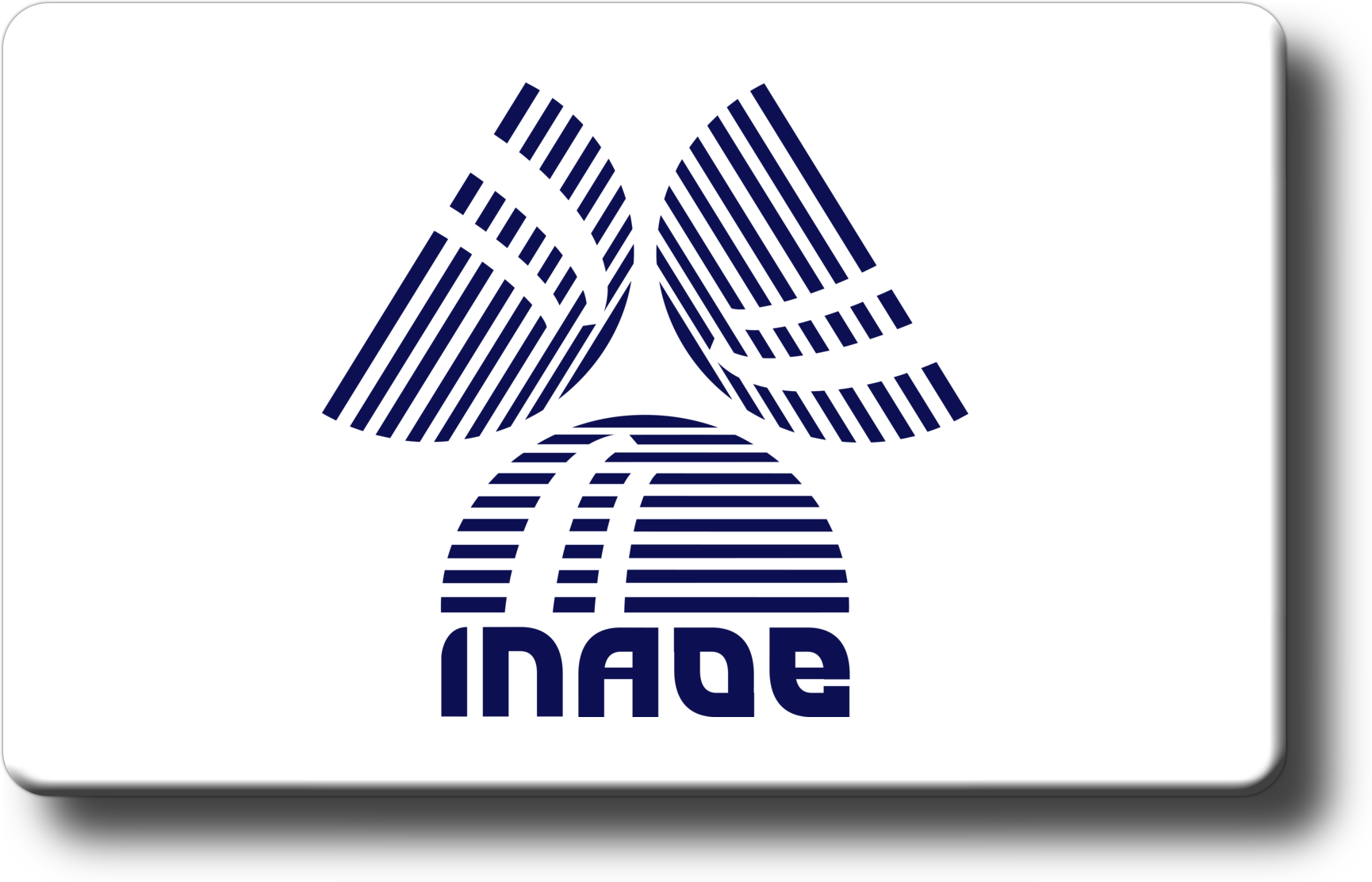
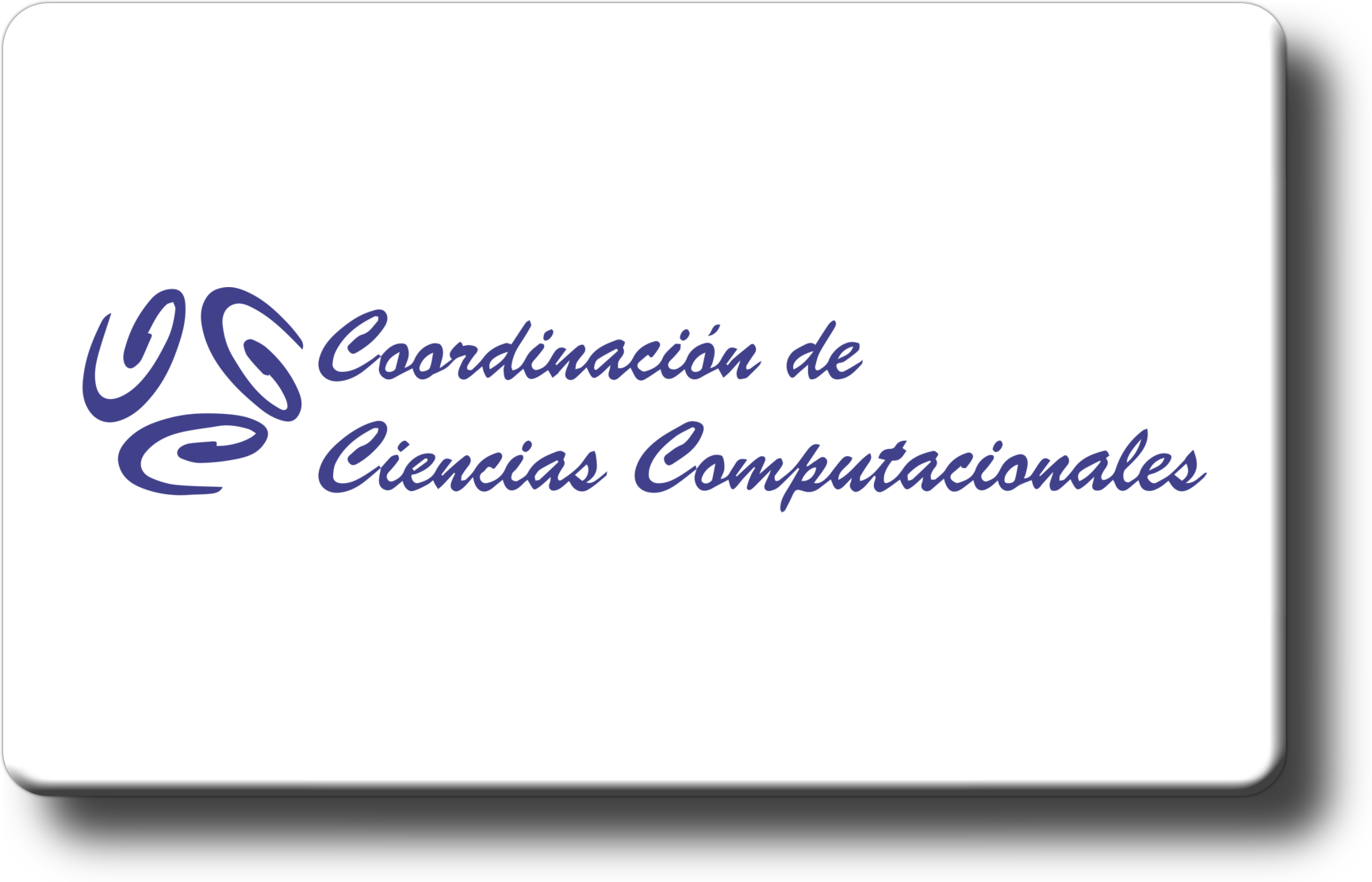
Acknowledgements to

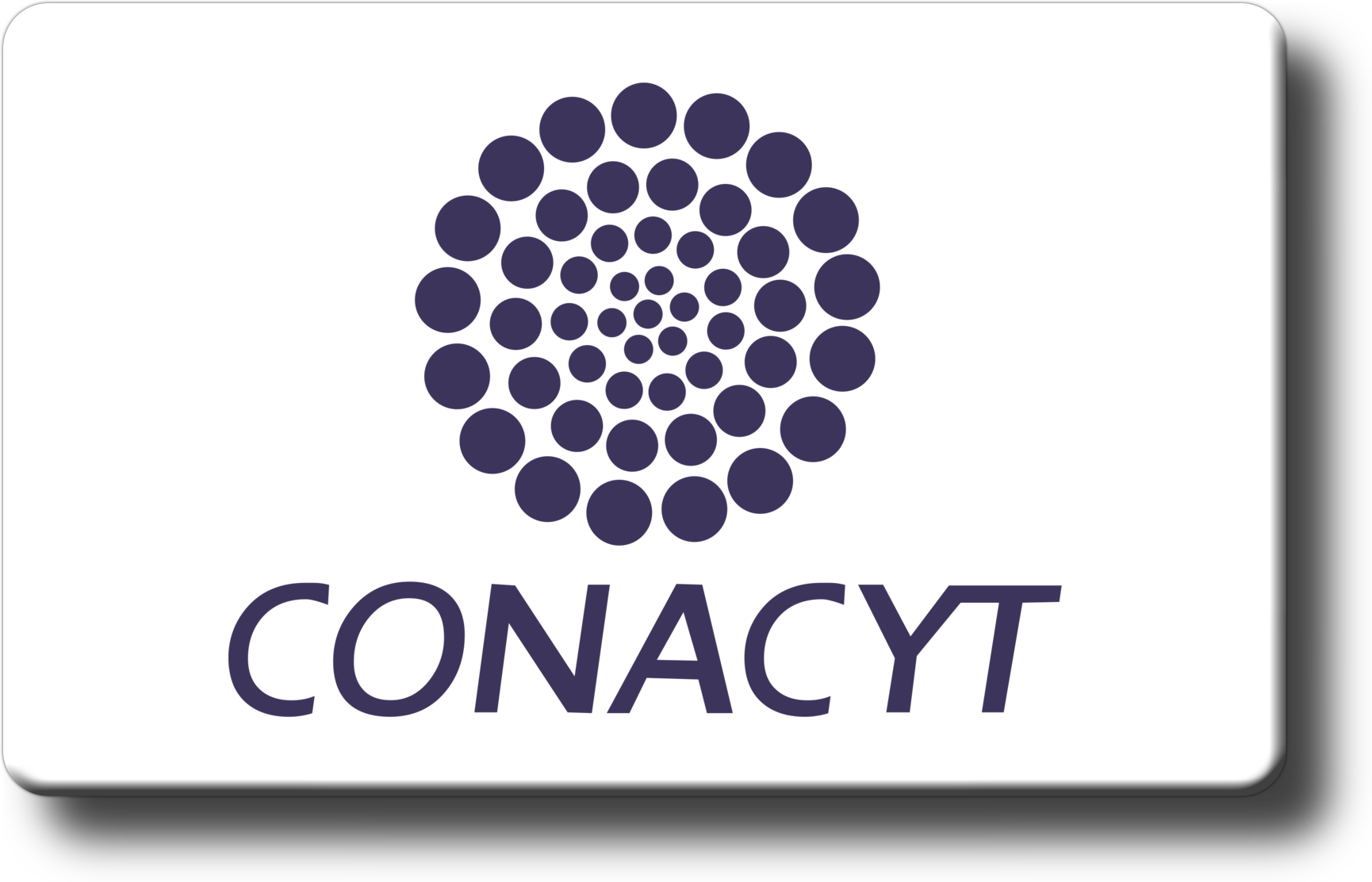
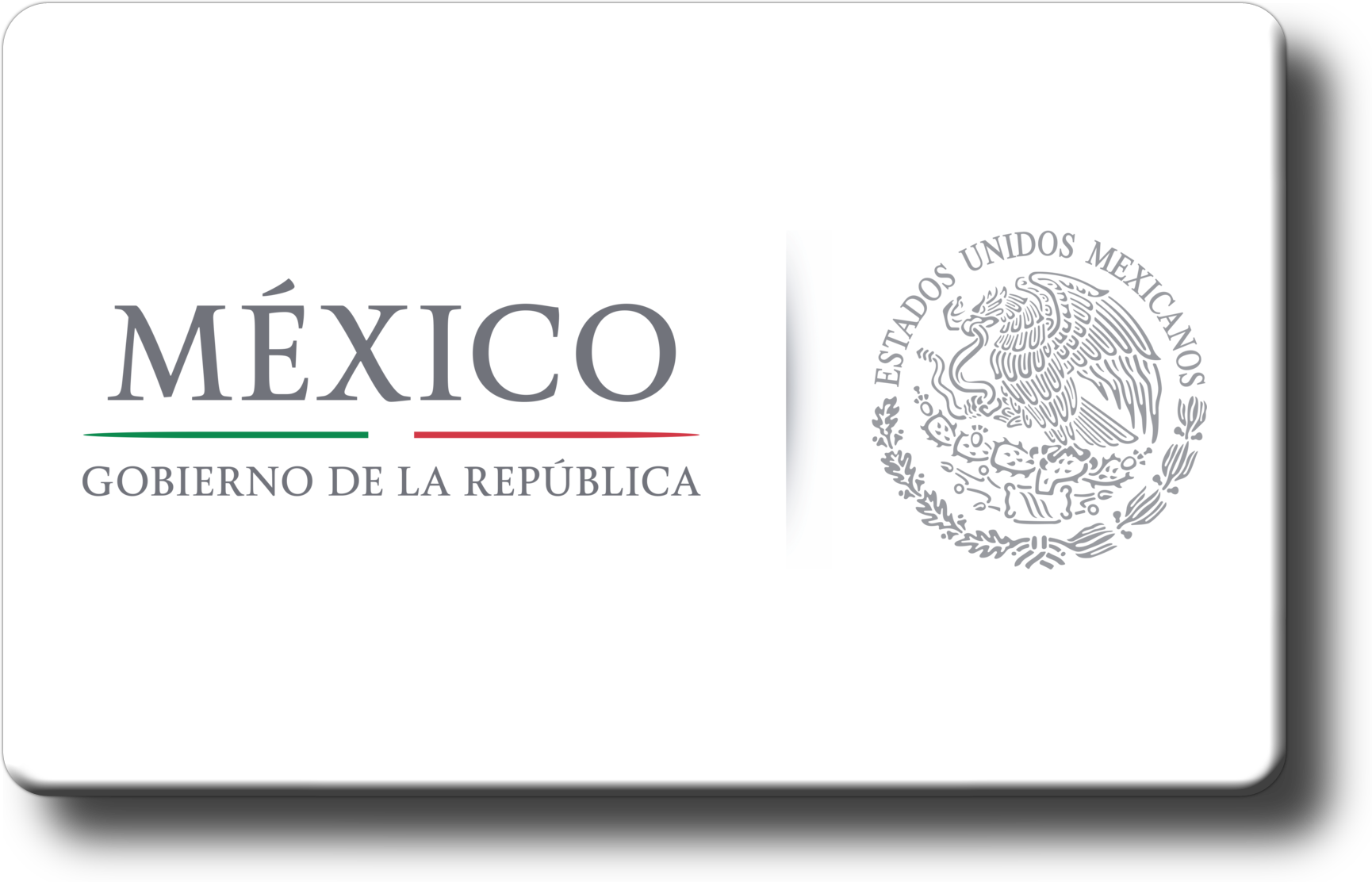
Download Event's Poster
